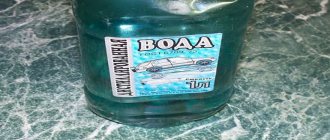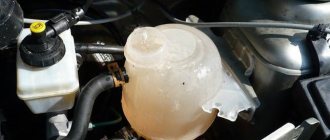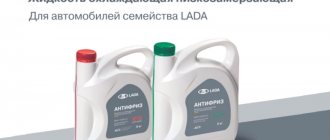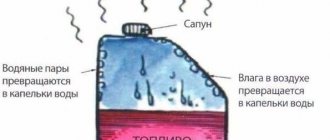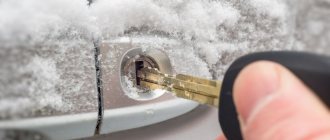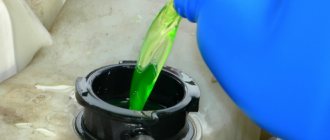The cold season has arrived, and many drivers do not know how to drain the washer fluid from the washer reservoir. There are many different reasons for this. Owners solve such problems each in their own way, some try to solve such a problem on their own, and some are ready to pay a certain amount for the provision of such a service by specialists. But there is no need to purchase special equipment or tools, you just need to know the structure of your own car in order to do such work yourself.
All car owners will be interested in learning how to drain the washer fluid from the washer reservoir. This operation should not be avoided, as the consequences can be dire for the windshield washer system and headlights of your car.
What is being put into the system?
In the last century, drivers could give only one answer to the question of what was poured into the washer reservoir: it was simple water. At that time, we had not even heard of special liquids for these purposes, and the glass washer system itself was not installed on all cars. An increase in the number of cars on the roads, changing climatic conditions, ensuring traffic safety in bad weather conditions and other factors forced developers to pay more attention to the development of this system.
In addition to cleaning windshields, dirt flushing systems for headlights have also appeared. Instead of water, special liquids began to be poured into the system, which contain chemical additives that improve the quality of glass cleaning, do not leave streaks, because they can impair the view of the road surface while driving, and also do not freeze when cold weather sets in, which is important for areas with long and cold winter.
How to defrost the washer reservoir?
The algorithm of actions here is extremely simple:
- Defrost ice
- Bleed water
- Fill with anti-freeze
The speed of solving the problem will depend on the volume of frozen water and the availability of free time.
If the washer reservoir is not full:
If there is still free volume in the tank, you can pour about 1 liter of hot water into it. True, this does not mean that you need to carry a boiling kettle from home - boiling water can damage the washing system
- Water can be heated inside the car - place a bottle of water near the heater turned on to “maximum”.
- Instead of water, a heated diluted concentrate of antifreeze liquid (for - 60-70 ° C) is also suitable - it also needs to be heated near the heating deflectors (see previous paragraph)
- It is acceptable to use alcohol or vodka instead of water or anti-freeze. However, it will take some time to explain the reasons for the alcoholic smell in the car to the traffic police inspector.
Read also: Bridge to a gazelle from a foreign car
If the washer reservoir is completely filled with ice:
The most reliable way to defrost is to leave the car in a warm place for a while:
- In a heated garage
- In the free underground parking of a large shopping center and other parking lots
- If it is impossible to find a warm room for your “iron horse”, you can use service services: at a car wash, asking to pour hot water on the car in the tank area, or at a service station, paying for defrosting using a hot hairdryer
You can cover the hood with improvised means (a blanket, an old jacket, etc.) and heat the interior as much as possible. An alternative option is to make (drill) a hole in the ice, into which you gradually pour hot water (washing water, alcohol, vodka, etc.), and then pump out the thawed liquid until the ice completely melts. When pumping out thawed water, an Esmarch mug and a thin rubber hose (all this is sold at the pharmacy) can help.
Happy owners of domestic cars (VAZs) can easily remove the tank by disconnecting the wires and tubes - defrosting it in a warm room will not be difficult. Owners of cars of other brands are recommended to study the manual first.
Why does it need to be changed?
It is impossible to answer this question definitely, since there are quite a lot of reasons for a change. If the system is filled with water, it can simply freeze in winter, which can lead to damage to the washer pump, rupture of the tubes supplying the composition to the nozzles, and failure of the sprinklers themselves. The use of tap water is also undesirable because precipitation, with prolonged use, leads to clogging of the tubes and nozzles.
Sometimes problems arise when using anti-freeze products, especially when purchasing counterfeit products. Unscrupulous manufacturers sometimes use alcohol-containing compounds that pose a health hazard. If unpleasant odors appear during use, it must be replaced immediately. Sometimes it happens that by mixing products from different manufacturers, a chemical reaction occurs and the liquid turns into a jelly-like composition.
Methods for completely eliminating fluid
Draining a water heating device can be done using one of three methods:
- The first method is used if there is a tee and a pipe, but extremely rarely. Acting strictly according to the instructions, you need to shut off the water at the inlet. To remove it from the tank, you need to use the tap located next to the pipe and control pipeline fittings.
- The second method is used when there is a special lever. To remove the liquid, it needs to be bent. To speed up the procedure, a hose is connected to the control pipeline fittings to remove water through the plumbing (for example, a bathtub, sink).
- The latter method is used with a check valve fixed for emergency pressure reduction in the water heating device. It must be unscrewed with caution, since with a significant amount of liquid the pressure will be strong at first, but then decrease sharply.
Important! In a situation where liquid does not leave the water heating device when the valve is open, you will need to look at the boiling water wiring, since oxygen can flow only when the wiring is open. To make draining easier, you can use a hose.
You can watch the video for more details on how to drain the boiler.
How to drain?
This also cannot be done with one piece of advice for all car enthusiasts, since each car model has its own system for cleaning the windshield and car headlights. The easiest way to drain cars from the last century. The body shape of such cars did not strive much for aerodynamic perfection; there was a lot of free space under the hood. Therefore, to replace it, it was enough to remove the washer pump, remove the reservoir from the bracket and drain its remains.
It is very difficult to call the engine compartment of modern cars free, so the place to install the washer reservoir, and the shape of the body of such products, can be the most unexpected. In some models it is installed in the area of the front bumper, in others near the radiator, and in some, such as in Renault Logan, under the protective grille near the windshield.
Among modern cars, the easiest way to do this is on the domestic VAZ Priora and Kalina models, in which they are installed in accessible places. In other models you will have to suffer a little, since in some cars you will need to remove the front wheel and fender liner, and in others you will also need to remove the bumper. But you can avoid such “showdowns”; let’s talk about this in more detail.
Windshield washer device
Every driver knows that when undergoing a technical inspection of a car, one of the elements that is checked for functionality is the windshield cleaning unit. However, for some reason many do not understand this importance. They say that the engine, steering and gearbox are important elements in a car. But if the washer is acting up, then there is nothing wrong with that. But for convenience, as well as driver safety when driving, the windshield must be clean. A good view of the road allows you to avoid accidents in the first place.
The windshield cleaning unit consists of the following main elements:
- windshield wiper blades;
- windshield wiper trapezoid;
- washer reservoir;
- glass washer fluid;
- hoses;
- washer nozzles.
It is important to monitor the performance of all elements. Without one of them working, the mechanism will not be able to perform its main function - cleaning the windshield.
Windshield washer device
It is recommended to change windshield wiper blades 2 times a year. Some people do this more often, some less often. In any case, during the operation of the car, the driver often realizes that it is time to replace the blades - they simply stop coping with their function, do not remove dirt well, or smear it all over the windshield.
Washer nozzles have a longer service life. Occasionally you can clean them with a needle and regulate the flow of liquid.
Washer nozzles can be cleaned with a thin needle
The washer reservoir must always be filled at least half full with liquid, water or washer fluid. This is due to the fact that if there is a lack of fluid during operation, the washer motor may fail and “burn out” due to insufficient lubrication. The driver chooses which fluid to use. Let's look at the advantages and disadvantages of each.
Classic composition of antifreeze liquid
Using ordinary water to wash glass in frosty conditions is unsafe, so a special composition has been invented that remains in a liquid state at subzero temperatures.
Initially, alcoholic liquids were used for these purposes, and since perestroika, many variations of anti-freeze have been on the shelves of car dealerships.
Components contained in the composition:
- Water that performs the direct function of washing glass.
- Alcohol , usually isopropyl or ethyl. Previously, it was replaced by methanol derivatives, but now it has been proven to be unsafe for human health and the environment, so this component is officially banned. In reality, you can find counterfeits based on this ingredient, so untested products are unsafe.
- Surfactants or surfactants. Thanks to this component, you can quickly and without additional driver intervention remove greasy oil stains, dust and other contaminants from the surface of the windshield.
- Ethylene glycol keeps the solution liquid and prevents ice from forming.
- Denatured alcohols are used in ethyl alcohol-based liquids. This practice is adopted in order to avoid attempts to ingest liquid. This is a requirement of domestic regulations; there is no such thing in EU countries.
- Flavorings , the purpose of which is to wash away the possible residual smell of “chemicals” and present the product in an attractive way.
- Dyes provide visual appeal to the composition, as well as easy identification. Traditionally, washer fluid has a blue tint. Buying overly saturated compounds can lead to staining of the hood, so this factor should also be taken into account when purchasing.
Despite the large selection of purchased compounds, the question of how to make antifreeze with your own hands is as relevant as in times of total shortage.
The dubious primacy in falsifying automobile consumables belongs to glass fluid, so you can reduce the possible risk by preparing the composition yourself.
Such compositions are not perfect, but are available and tested over the years.
Features of boiler cleaning
Most of the scale accumulates near the heating element. If a lot of scale has formed on a tubular electric heater, it is recommended to manually remove pieces of peeling using a knife and treat the part with a solution. To prepare it, dissolve 2 packets of citric acid in 1500 ml of water. The part is left in the resulting solution for 6-8 hours. In addition to citric acid, you can use industrial chemicals (they are sold in hardware stores). It is prohibited to use abrasive products to remove from enamel surfaces.
Manufacturing instructions
A budget anti-freeze option includes clean water (preferably filtered), dishwashing liquid , alcohol, liquid soap and window cleaner.
The cleaning ability and resistance to negative temperatures of the resulting composition directly depend on the quality of the starting ingredients, so you should not skimp on this point.
The proportions of the composition will be as follows:
- three liters of water;
- 0.5 liters of alcohol;
- 2 tsp window cleaner;
- 1 tsp liquid soap;
- 1 tsp dishwashing detergent.
To prepare anti-freeze, just mix all the ingredients together. Before using directly on a car, it is worth testing the composition by leaving it overnight in the cold or in the refrigerator. If nothing critical has happened to the resulting mixture in the morning: the liquid in the composition has not frozen, no sediment has formed at the bottom, it can be safely used.
Instructions for popular models
How to drain a Thermex water heater
- Turn off the power supply;
- We wait until the water becomes cold or at least summer-like;
- Turn off the cold one;
- Open the hot one and wait until the rest of the water has gone;
- Unscrew the fasteners on the valve;
- Connect the hose to the drain;
- Unscrew the fastening of the hot pipe and drain it.
The video will show you how to drain a Termex water heater.
How to drain an Ariston water heater
- Disconnect from the network;
- Cool the water;
- Turn off the cold one;
- Open the hot one, reducing the pressure, and drain the remainder;
- Open the water supply tap, letting in the air flow;
- Turn the tap;
- Insert the hose;
- Let's go down.
Carefully watch our video on how to drain an Ariston water heater, and then during the procedure you will not break the rules.
How to drain an Electrolux water heater
- Disconnect the device from the power supply;
- Cool the water;
- Turn off the water;
- Open the hot valve;
- Unscrew the handle on the valve;
- Connect the hose to the pipe to release the water.
We recommend watching a video on how to drain water from an Electrolux water heater.

